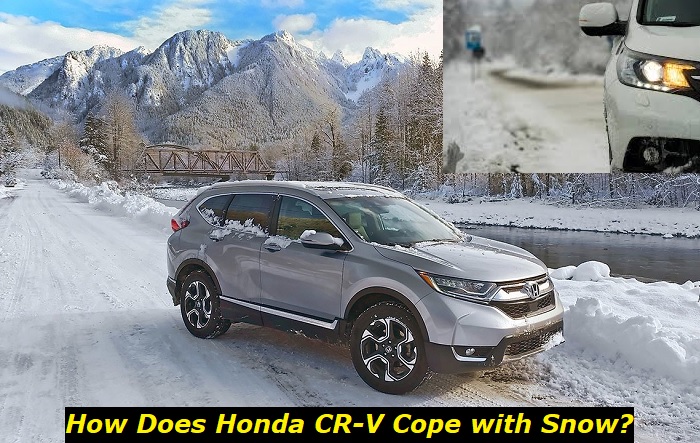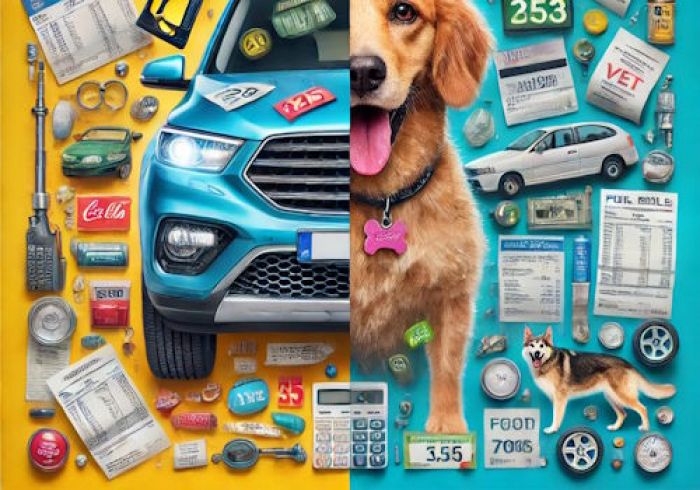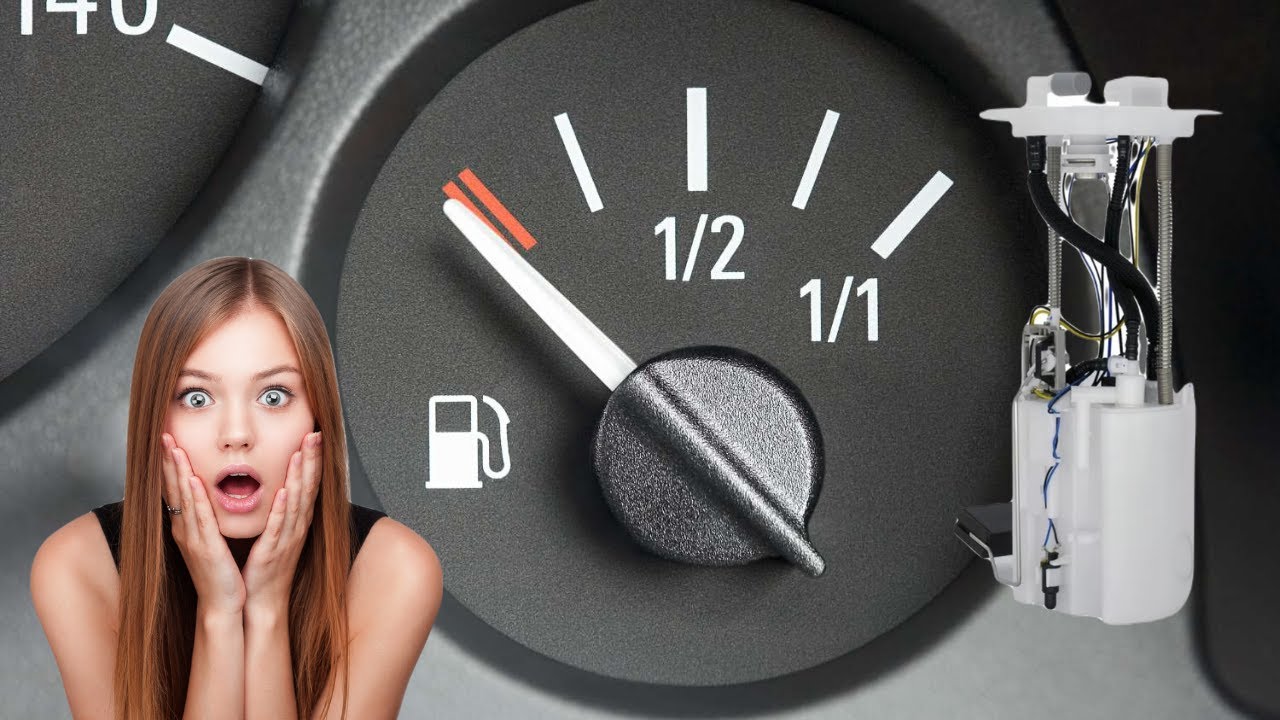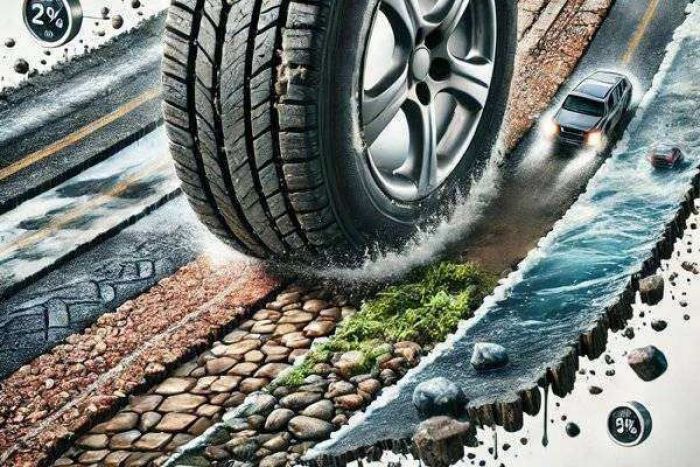Since 1995, Honda CR-V has grown in leaps and bounds. From the LX model trim to its current trims, the Honda CR-V has grown to command a sizeable market share in the US SUV market segment. In its 6th generation now, the CR-V is trusted by many drivers across the globe to handle snow, mud, highway, and rough terrain superbly.
In this article, we look at Honda CR-V handling in snow. We investigate how it feels and how to drive it correctly. We will learn cool tricks that will make your driving on snowy roads easy and fun. While Honda CR-V is an obvious go-to SUV for families, it boasts subtle features which make it a champion in snow.

How does Honda CR-V handle in snow?
If you are shopping for an affordable car with reasonable ground clearance and can handle snow well, Honda CR-V is the SUV to pick. The all-wheel-drive (AWD) CR-V handles quite superbly in snow. The Real-time All-wheel-drive system ensures the CR-V remains reliable even on the most snow-covered roads.
The 2023 CR-V is equipped with 1.5l or 2.0l engines. The older generations have 2.2l or 2.4l options, which can be FWD or AWD. The CR-V has ample torque and horsepower to power you through any tricky terrain. However, as you may well be aware, driving in snow requires more than a powerful engine or good ground clearance.
What features does CR-V have for snow driving?
1) Real-Time All-wheel-drive system
The real-time all-wheel-drive feature in Honda CR-V finds a secure, safe, and fuel-efficient drive using its computer to determine whether the rear wheels need to be powered. This feature also determines how much power the rear wheels require.
When driving uphill, you will find that the rear wheels are given maximum power, unlike when the vehicle starts off. The feature makes CR-V capable of handling treacherous snowy terrain with relative prowess. Under normal driving conditions, the Real-time AWD only sends power to the front wheels. This helps at making the CR-V fuel efficient.
2) Snow mode
Snow mode is becoming a trendy feature, and almost all modern crossovers have it. The snow mode is a new feature in the Honda lineup, including in the 2023 CR-V. This feature is intended to reduce wheel slip when accelerating on snow-covered roads.
As stated earlier, Honda CR-V is predominantly AWD. This might make it seem unnecessary to include the snow mode feature. However, snow mode will change the transmission and throttle settings to let the AWD be ready even before the vehicle encounters snow.
3) Hill decent control (HDC)
You may have seen videos of cars uncontrollably sliding downhill on snowy roads even as the driver's foot is hard on the brake pedal. The Honda Hill Decent Control (HDC) feature can make the difference between your CR-V sliding downhill uncontrollably and having control over your car.
Even on a treacherous road, the CR-V will handle safely because the wheels will have better traction. The feature might not sound necessary to people who typically drive in warm climates or on flat roads. However, for those in hilly snowy areas, the HDC can determine whether you land in a ditch or reach your destination safely.
4) Traction control
The traction control system (TSC) is a standard feature in Honda CR-V. The system detects when a wheel slips. When a wheel loses grip on the road, the system automatically reduces engine power and applies brakes to the slipping wheel. TSC enhances all wheels to have proper grip and keep the vehicle moving forward.
5) High ground clearance
Depending on the CR-V trim level and the year of make, you should enjoy a ground clearance of at least 7.8 inches which goes up to 8.2 inches. Good ground clearance is vital when it comes to snowy driving. You might find your vehicle's undercarriage hitting snow and debris when driving in snow. This is especially the case when driving off-road. High ground clearance offered by the CR-V ensures the undercarriage stays clear of the ground, reducing the chance of the car getting stuck.
6) Antilock brake system (ABS)
ABS is a popular feature on modern and older vehicles. The ABS is designed to prevent wheel lockup, especially after hard braking. The system employs several sensors. When you brake, and the system detects a wheel not rotating because of your hard braking, it reduces the brake pressure to allow the wheel to rotate.
When the wheels lock, the vehicle tends to skid. If this happens at high speed, it can be dangerous. On snowy roads, ABS can be a lifesaver.
7) Electronic brake force distribution (EBD)
EBD ensures brake pressure is distributed to the four wheels according to weight distribution. In your CR-V, the front wheels carry the most weight. The rear wheels would lock up if the braking force was distributed equally. The EBD system works similarly to ABS save for the weight distribution aspect.
8) Vehicle stability assist (VSA)
Many car manufacturers call VSA electronic stability control. This feature helps stabilize your SUV, especially when cornering on wet roads. When driving on a slippery road and a wheel slips, the VSA will activate and choke the engine reducing the vehicle's speed. The VSA will also apply brakes on the individual wheel, thus stopping slipping and enhancing stability and traction.
9) Brake assist
When driving on snow, it takes your CR-V longer to stop when you apply the brakes. This means the car might still be moving even after pressing the brake pedal to the floor. The brake assist feature detects when you intend to make an emergency stop and will apply more pressure to ensure the car stops faster. This feature helps you stop faster, avoid hitting other cars, pedestrians making the roads safer for everyone.
How to Drive Honda CR-V in the snow?
Honda CR-V is a superb car on normal roads. It strikes good points too, on rough terrain. However, if your CR-V is FWD, you might not have the best experience on snowy roads. This is especially the case if you do not have snow tires. An FWD CR-V will struggle a lot, and you might end up in a ditch. AWD Honda CR-V is capable and will not have a tough time in the snow.
- First, ensure that you can see through every window.
- Pull away in second gear. If already in motion, maintain high gear but low RPMs. This helps prevent the spinning of tires.
- Though CR-V has ABS and EBD, match your speed to what you can see. Maintain distance behind the vehicles in front.
- When braking, maintain a straight line. This will help avoid the car from sliding.
- When going uphill, ensure your speed is reasonable to allow you to climb without wheels slipping. Driving unreasonably slowly uphill will undoubtedly leave you stuck.
What can you do to enhance Honda CR-V drivability in snow?
To safely drive in snow, equip your CR-V with the proper tools. The car has systems that can manually be activated whenever you encounter snow. Other systems, such as ABS and EBD, will activate automatically. To enhance the CR-V's drivability, here are a few tips:
- Snow tires
Snow tires have trends that enhance traction. If your CR-V is FWD and your region gets very snowy, you should buy these tires. For an AWD, snow tires are not necessary.
- Snow chains
These come in handy in adverse wintery conditions. They increase the traction of the wheels to the ground. Snow chains are not permanent on your vehicle. It has been shown that properly fitting snow chains outperform snow tires.
- Ice studs
Studs are small metal spikes inserted on the tires and protrude slightly from the tire's tread. The studs help by breaking through solid ice and giving the tires traction. A car is unlikely to skid when you use studs.
- Snow socks
These are devices wrapped around tires to help increase traction. Snow socks are usually made using woven fabric with elastomer attached on the outer and inner sides. The woven fabric should cover the tire tread and will be the one in contact with the snow. The elastomer keeps the sock in place and helps in the fitting of the sock on the tire. It is worth noting that snow chains offer better traction than snow socks.
Conclusion
The Honda CR-V is a great family crossover that has donned our roads for years. Honda has, over the years, tweaked the vehicle's capabilities such that it is considered a capable car even by those that live in severe wintery places. Irrespective of the CR-V you have, you can rest easy knowing that it is a capable SUV.
In the latest version of CR-V, Honda has included the snow mode feature. It enhances the SUV's capability in snow. Combined with other safety features, the CR-V is now more capable than ever. Remember that you can have extra tools, such as ice studs or snow chains, to help you drive through snow.
About the authors
The CarAraC research team is composed of seasoned auto mechanics and automotive industry professionals, including individuals with advanced degrees and certifications in their field. Our team members boast prestigious credentials, reflecting their extensive knowledge and skills. These qualifications include: IMI: Institute of the Motor Industry, ASE-Certified Master Automobile Technicians; Coventry University, Graduate of MA in Automotive Journalism; Politecnico di Torino, Italy, MS Automotive Engineering; Ss. Cyril and Methodius University in Skopje, Mechanical University in Skopje; TOC Automotive College; DHA Suffa University, Department of Mechanical Engineering






Add comment